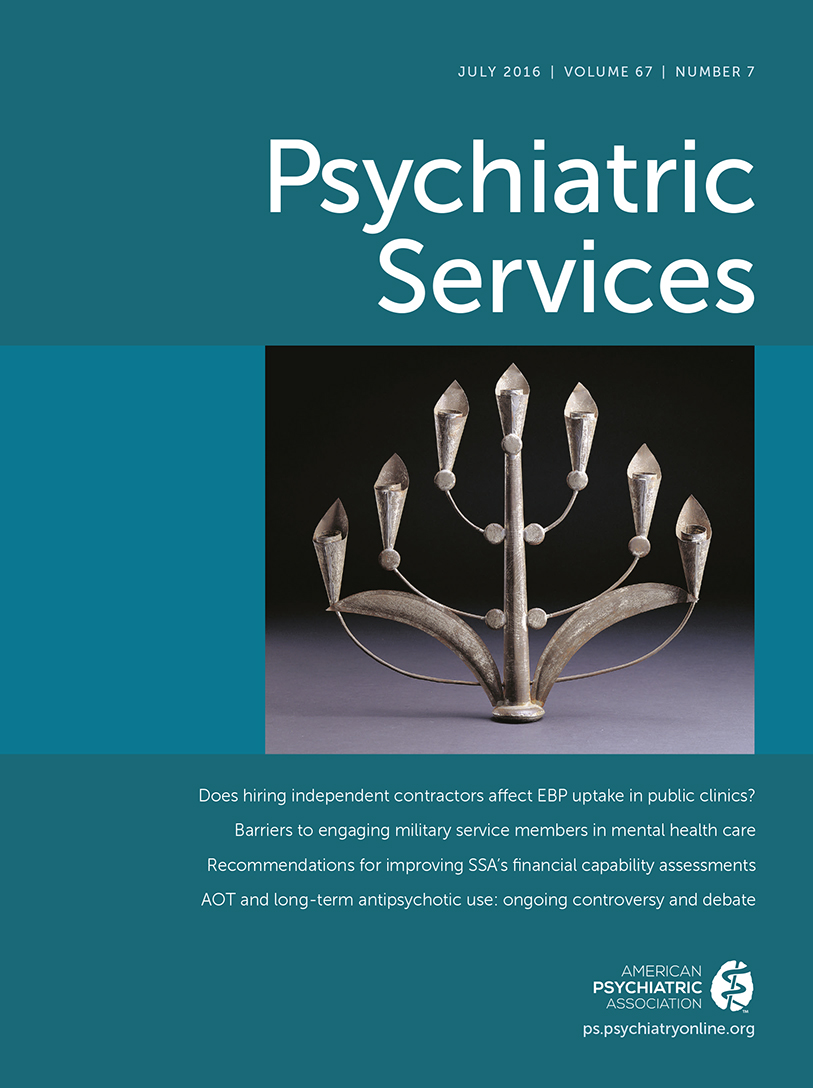Documenting AOT Implementation: Misinformed Informants?
TO THE EDITOR: Those of us who want to see assisted outpatient treatment (AOT) used effectively have long lamented the dearth of data on how widely and fully AOT has been implemented across the United States. Unfortunately, the unreliable method by which Meldrum and colleagues (1) collected such information—relying solely on an interview with an “informed contact” in each state—has yielded a data set that falls far short of valid.
We must acknowledge having conducted a similar survey ourselves, as one component of a 2014 Treatment Advocacy Center report on state civil commitment laws. Therefore, we know from experience that it is much easier to find state mental health officials who think that they know the extent of AOT implementation in their state than it is to find anyone who actually does.
The reason is that with a few notable exceptions, AOT programs are neither implemented on the state level nor monitored by state mental health agencies. AOT programs are typically established by city, county, and regional mental health systems in collaboration with local courts. They function under authority granted by state law, but there is no administrative role for state government. Which is to say that in seeking to discover “the ways in which individual states have utilized” AOT [emphasis added], we believe that Meldrum and colleagues started off by asking the wrong question.
Predictably, the result is an inaccurate and misleading set of findings, based on verbal, unverified claims of the interviewees. Meldrum and colleagues report that 20 states have “active, operational, and documented” AOT programs. Of these, 14 were found to be full statewide programs, and six were “limited to one or more counties.” Meanwhile, 17 states were found to have “relatively inactive” programs.
From our own deep engagement in AOT nationally, we know that much of what Meldrum and colleagues were told by their informants is not accurate. New Jersey, listed as an “inactive” state, has, in fact, been one of the most active; it recently achieved implementation of AOT in all 21 counties. Illinois, listed as a statewide success, has frustratingly little AOT. New York, with AOT implementation supposedly “limited to one or more counties,” has actually been the national leader, with active programs in all regions. Nevada makes the list of “limited active” states, presumably on the strength of its sole, fledgling, and still-modest program in Clark County, whereas many states with long-standing robust programs in certain counties—such as Texas (Bexar), Florida (Seminole), Ohio (Butler, Summit) and Michigan (Oakland)—are inexplicably relegated to the “inactive” list.
To properly survey the implementation of AOT would require a county-by-county effort across the states with AOT laws, with independent verification of interviewees’ claims. The state-level approach taken by Meldrum and colleagues provides little basis for their various claims regarding the prevalence and nature of AOT programs nationally.
1 : Implementation status of assisted outpatient treatment programs: a national survey. Psychiatric Services 67:630–635, 2016Link, Google Scholar



